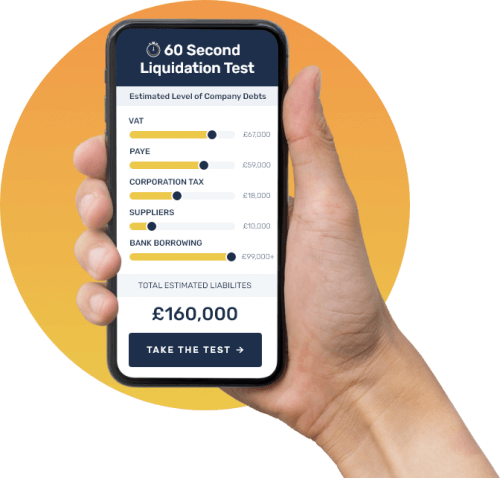Can I dissolve my limited company and how does it work?
Dissolving a limited company is the simplest and cheapest way to close it down. The process, known as Company Dissolution or Strike Off, is one you can complete yourself. Just cease trading, submit the relevant forms, and assuming all the details are correct, the business will be struck off the Companies House register and cease to exist.
Although it’s usually straightforward, dissolving a company is not an option for every business. There are eligibility criteria the company must meet and things you must do, such as repaying your creditors, to prepare the business for dissolution.
What is Company Dissolution?
Dissolution is a process to permanently close a limited company that does not have debts (i.e. it’s solvent). If the company has debts, you must repay all your creditors before you can strike the company off. If you can’t afford to do that, you’ll have to close it down using an insolvent liquidation.
There are many reasons why you might choose to dissolve your limited company. You might want to retire and have no one to carry the company on or the business might have run its course and you’re ready for something new.
Unlike the other methods of voluntarily closing a business, there are no liquidator fees to worry about. The only charge is a £8 fee when completing the process online.
Worried about your Bounce Back Loan?
If you are a limited company director worried about how you are going to repay your Bounce Back Loan, we are here to help. As licensed insolvency practitioners we can talk you through your options when it comes to repaying your outstanding Bounce Back Loan, as well as handling all negotiations with creditors on your behalf. Call our team today on 0800 063 9262 .
Can I dissolve my limited company?
Your company must meet certain criteria to be eligible for the strike-off process. As we’ve already said, it must be solvent and able to repay its debts in full. It must also not have:
- Traded in the last three months
- Changed its name in the last three months
- Any ongoing legal proceedings against it
- An ongoing formal repayment arrangement, such as a Company
- Voluntary Arrangement (CVA)
If the company is eligible and you have the agreement of the other directors (if there are any), you can send an application to Companies House to dissolve your company online or by post (you should only use the paper form if you cannot apply online).
How do I dissolve a limited company?
The process for dissolving a limited company starts before you submit the relevant forms to Companies House as there are things you must do to prepare.
Cease trading
Complete all work, collect the money you’re owed and cease all business activities. You cannot dissolve a company if you have traded or sold stock at any time in the last three months.
Inform relevant parties
Inform all company stakeholders of your decision to close the company, including employees, shareholders, clients and any creditors.
Liquidate the company’s assets
This is a crucial step as the ownership of any assets you do not sell or transfer before dissolving the company passes to the crown.
Repay company debts
Use cash reserves or the proceeds from the sale of assets to repay the company’s creditors (if it has any). If you try to dissolve the company with debts, your creditors can object to the dissolution and the process will cease. If you cannot afford to pay the company’s debts, you can close it using a Creditors’ Voluntary Liquidation (CVL).
Pay employees
Pay employees their final wages and follow the rules around redundancy pay.
File your company tax return
File your final statutory accounts with HMRC and state that they are your final accounts due to the dissolution of the company. You should also file a company tax return with HMRC and pay what you owe, de-register for VAT and close the company’s payroll scheme.
End contracts and close company bank accounts
The final step is to end any ongoing contracts, such as utilities, and close the company’s bank account.
Apply for strike-off
You can now follow the online procedure to dissolve the company. You must inform all interested parties, including employees, shareholders and creditors, within seven days of submitting the application.
The company will be dissolved
A notice will be advertised in the Gazette announcing your decision to dissolve the company. At that point, any remaining creditors will have the chance to object. If no one objects, the company will be dissolved two months after the first notice was advertised. A second notice will be published in the Gazette confirming the company has been struck off.
How long does it take to dissolve a company?
After you submit the application to Companies House, it will be advertised in the Gazette. From that point, it’ll be at least two months until the company is struck off. In reality, it often takes longer as there are various tasks to prepare the business for closure before you apply.
Can I dissolve a company with debts?
No. The company dissolution process is for solvent companies that can pay all their debts before they close.
If you try to dissolve a company with debts, your creditors can submit an objection which will bring the process to a standstill, usually for between three and six months. That will give the creditor time to collect the debt or take action against you.
Even if you do manage to dissolve a company with debts, a creditor can apply to the court to restore your business to the register. They can then take action to recover the debt and potentially force you into Compulsory Liquidation.
Start your online liquidation today
If you have decided liquidation is the right option for your limited company, you can take the first step and begin the process online using our online portal. Starting the process is quick, simple, and can be done at a time that suits you. Your information will be submitted to your local UK Liquidators insolvency practitioner who will be with you every step of the way. Click here to start your company’s liquidation online.
What are the alternatives to dissolving a company?
Dissolution is not the only way to deal with a solvent company you no longer need.
- Members’ Voluntary Liquidation (MVL)
To close the company via a Members’ Voluntary Liquidation, you’ll need to appoint a liquidator to act on your behalf, which typically costs between £2,000 and £3,000. They’ll liquidate the company’s assets, repay your creditors and distribute the remaining funds among the shareholders before closing the company.
The benefit of an MVL is that you can take retained profits and proceeds from the sale of assets out of the company as capital, which is subject to Capital Gains Tax. You may also be eligible for Business Asset Disposal Relief.
When dissolving a company, you take any profits out as income and pay a higher rate of tax. Therefore, despite the liquidation fees, if you have reserves of around £35,000 or more after paying all liabilities, an MVL is likely to be a more cost-effective closure method.
- Register the company as dormant
The other option you have is to register the company as dormant. If you think you may need the company again in the future, registering it as dormant is the best option as the company will still exist, you can keep the business name and you can reinstate it at any time.
How can UK Liquidators help?
If you are thinking about dissolving a company but are unsure whether it’s the best way to close it down, we can help. We can talk you through the available options and guide you on the best course of action. Call today for a free, same-day consultation or arrange a meeting at one of our 100+ offices nationwide.
If you are considering liquidation for your limited company, taking advice from a licensed insolvency practitioner can help you understand your options.
Take our 60 second test and find out




























